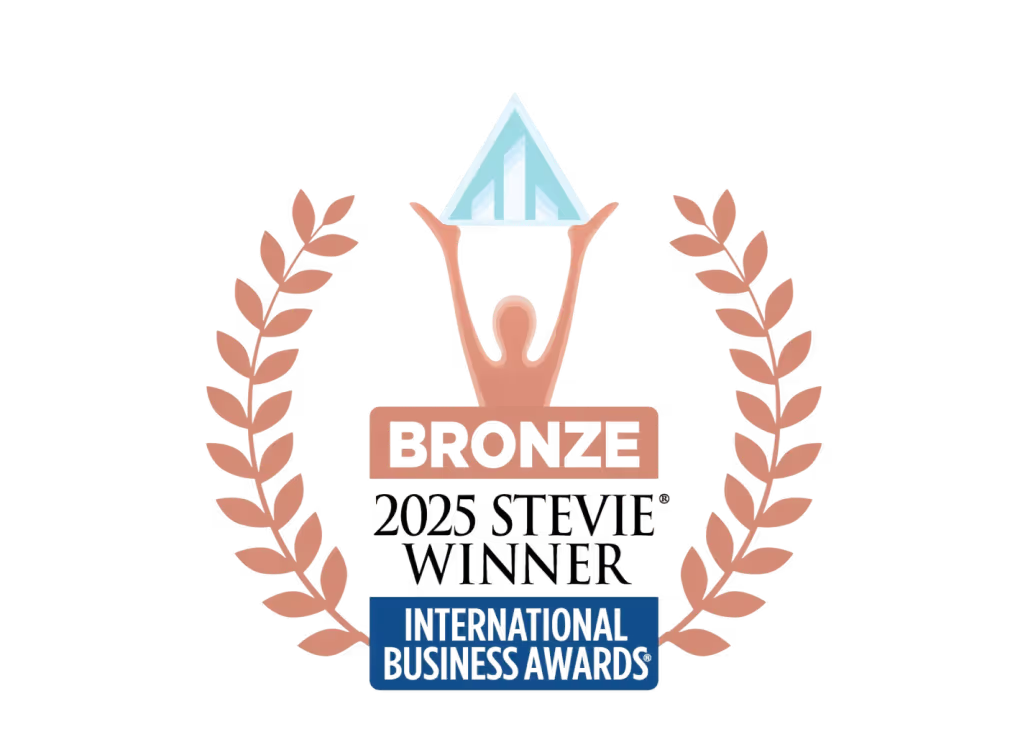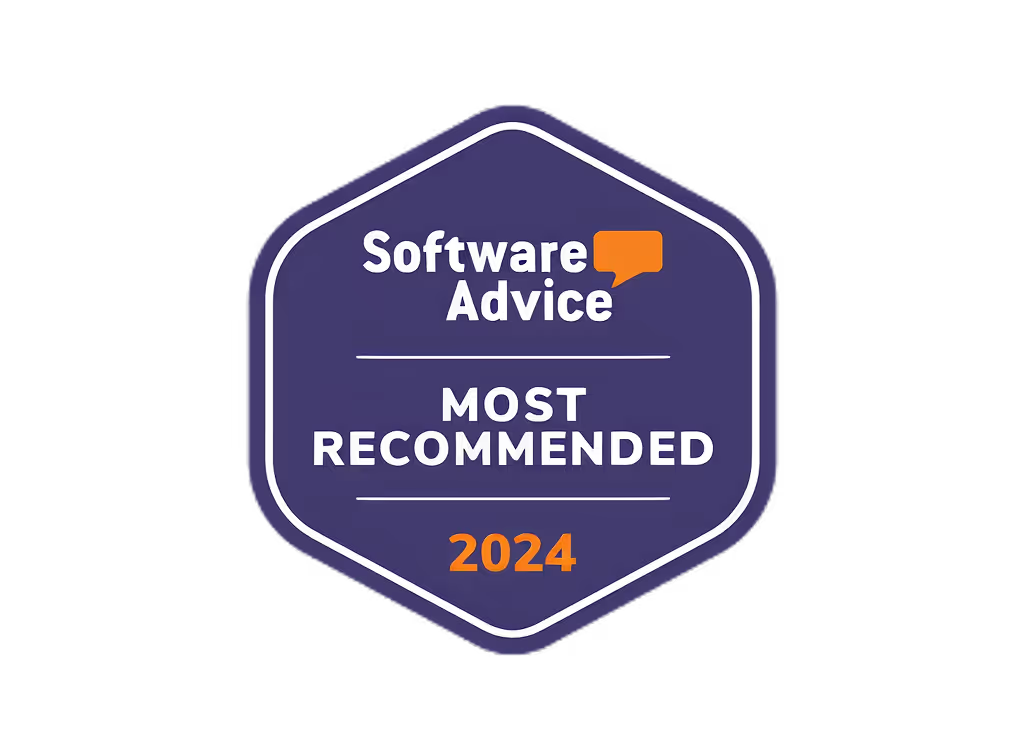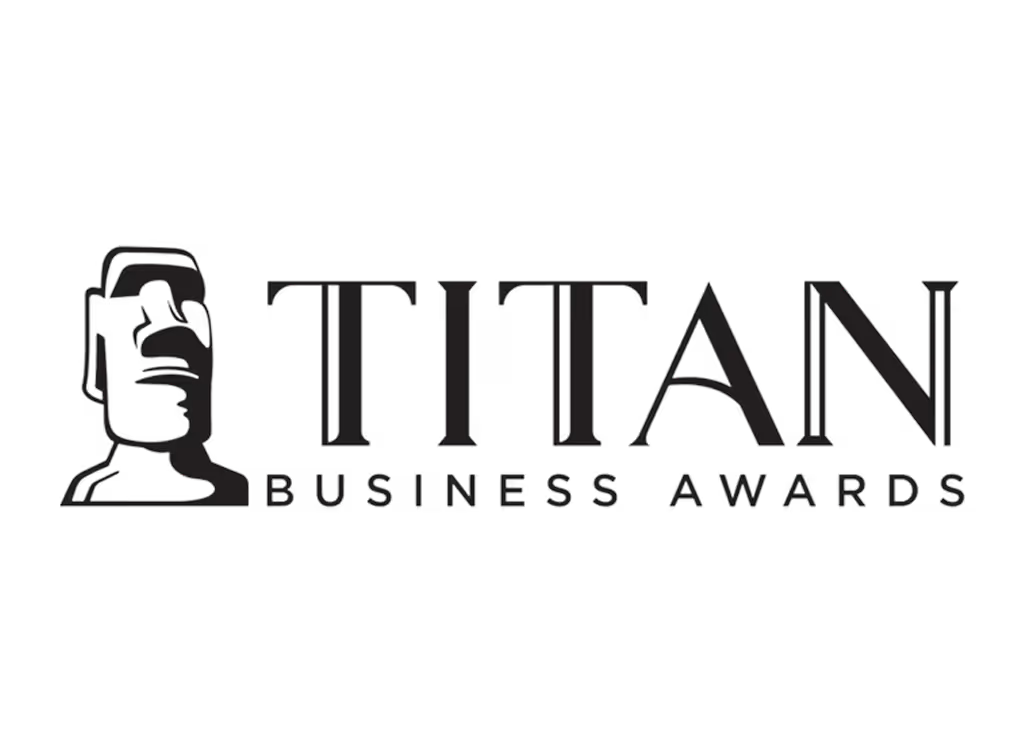Best Creative Platforms for Non-Technical Users

Finding the right creative platform can be a challenge for non-technical users.
In this post, we'll explore the best creative platforms specifically designed for ease of use, empowering business owners to unleash their creativity without technical complexity.
We'll evaluate leading options across categories like website builders, design tools, CRMs, and more - focusing on intuitive interfaces, minimal learning curves, and versatile features to meet diverse needs.
Embracing Creativity with Ease
The Rise of User-Friendly Creative Platforms
The past few years have seen an explosion of intuitive creative platforms aimed at non-technical users. These tools make it easy for anyone to produce professional-quality graphics, videos, websites, and more without needing advanced design skills.
Platforms like Canva, Crello, PicMonkey, and Quickads offer drag-and-drop interfaces, pre-made templates, and built-in design elements that enable users to quickly build visually appealing materials. Features like photo editing, animation, and integration with sites like YouTube and Facebook streamline the creative process for non-designers. As a result, small business owners, entrepreneurs, marketers, and everyday users now have the power to bring their ideas to life.
The key driving this democratization of creativity is a focus on simplicity and ease of use. Minimal learning curves mean beginners can dive right in to creating social media posts, digital ads, logos, presentations, and other graphics. Meanwhile, robust tutorials, intuitive layouts, and smart assistance features provide guidance for users of all skill levels.
Empowering Non-Technical Business Owners
These advancements have greatly benefited non-technical business owners who previously struggled with visual content creation. Without advanced design expertise, it was once difficult to produce the type of eye-catching graphics and videos that cut through the digital noise.
Now, platforms like Bannerbear, Design Wizard, and Quickads make it simple for small business owners to create on-brand display ads, social posts, email headers, flyers, and more. Features like brand asset management, style consistency, and content collaboration empower users to develop cohesive marketing campaigns. Others like Animatron and Biteable provide easy animated video creation to help businesses connect with modern audiences.
For non-technical users running e-commerce stores, solutions like PageCloud, Wix, and Quickads offer intuitive website builders, CMS platforms, and ad creation tools. They provide beautiful templates, drag-and-drop editors, and SEO optimization to help entrepreneurs build responsive, mobile-friendly online stores. Advanced e-commerce features like customer management and payment processing are also available.
Criteria for Choosing the Right Platform
When evaluating creative platforms, non-technical users should consider aspects like:
- Intuitive interface: The platform should offer a clean, visually-appealing interface that is easy to navigate. Layouts, menus, and options should be clear and accessible.
- Quality & customizability: Users should be able to create high-quality, customized designs without compromising brand identity. Extensive media libraries, fonts, color palettes, and editing tools can enable this.
- Ease of use: Minimal effort should be required to produce graphics, videos, and other visual content. Features like drag-and-drop, templates, and smart design assistance are ideal.
- Tutorials & support: Detailed tutorials, FAQs, chat support, and an active user community provide guidance for overcoming creative barriers.
- Affordability: Pricing models should align with target users' budgets, with transparent costs and subscription options. Many platforms offer free tiers.
- Integration & collaboration: Users should be able to integrate creations across digital channels and enable team collaboration for large projects.
By selecting a platform based on these criteria, non-technical business owners can find creative solutions tailored to their unique needs and business goals. The right tools make it simple for users of all backgrounds to produce stunning, effective visual content.
What are creativity platforms?
Creative platforms provide user-friendly tools for businesses and marketers to easily create high-quality visual content like ads, graphics, videos, and more without needing design skills. They simplify and streamline the creative process through features like:
- Intuitive drag-and-drop editors to quickly build eye-catching designs
- Professionally designed templates to customize on-brand assets
- Integration with marketing platforms like social media, email, and websites
- Options to collaborate with team members on creative projects
- AI tools to generate content ideas, copy, images and more
These platforms empower non-technical users to produce professional, customized creatives that resonate with their target audiences across campaigns and channels. They save time and money compared to hiring designers or using multiple standalone tools.
For small teams with limited resources looking to improve their visual content and campaign performance, creative platforms provide an all-in-one solution to efficiently create, manage, and optimize branded assets that drive results. The easy-to-use interfaces allow users of all skill levels to unlock their creative potential.
What makes a good creative platform?
A good creative platform enables users to efficiently create high-quality, visually appealing content without needing extensive design skills or coding knowledge. Key features of an effective platform include:
- Intuitive interface: An easy-to-use dashboard with drag-and-drop functionality, customizable templates, and built-in design tools allows non-technical users to quickly build professional creatives.
- Collaboration features: Options to collaborate with team members, provide feedback, and track changes streamlines workflow.
- Asset management: Libraries of fonts, images, icons, graphics, and videos helps users access materials to enhance creatives without starting from scratch.
- Multi-format exporting: The ability to export and download creatives in various file types and sizes for different platforms and campaigns saves manual reformatting efforts.
- Analytics integration: Connecting platforms with analytics tools provides insight into top-performing creatives to inform future content.
- Automation: AI-powered features like automatically generating creatives from product data or translating copy to multiple languages scales content production.
The key is striking the right balance between ease-of-use and advanced functionality so users with any level of technical skill can create stunning, optimized creatives with minimal effort. Evaluating platforms based on these criteria streamlines identifying one suited for your business needs.
What is a creative brand platform?
A creative brand platform refers to the systems and tools used to develop and manage a company's visual brand identity and creative assets. This includes elements like:
- Brand guidelines - Defines a company's visual identity including logo, fonts, colors, imagery style etc. This ensures brand consistency across different touchpoints.
- Asset management - Centralized storage for brand assets like logos, fonts, images, videos, templates. Enables easy asset search/retrieval.
- Campaign management - Plan, collaborate and track multi-channel campaigns in one place.
- Content creation - Produce on-brand content for ads, websites, social media quickly. Features like customizable templates, integrated tools, approval workflows.
- Analytics - Track performance to guide creative optimization. Identify best resonating assets.
An effective creative platform equips teams to efficiently develop standout creative content that strongly represents the brand. This drives greater customer engagement and business growth.
For non-technical users like small business owners, ease of use in creative platforms is key. Intuitive dashboards, customizable templates and integrated editing tools make producing quality, on-brand assets simple. Minimal learning curves get users creating faster. Automation features also save time and effort.
So in summary, creative platforms provide user-friendly tools for building and managing visual brand identities. For non-technical users, opting for an intuitive platform focused on simplicity accelerates brand-aligned creative content production.
What is a creative management platform?
A creative management platform is software designed to help brands and publishers streamline the process of creating, managing, and distributing visual content. These platforms aim to solve key pain points for marketing and creative teams:
- Centralized asset management: Store all your brand assets like logos, fonts, images, and design templates in one secure, cloud-based library that your entire team can access. This eliminates digging through messy folders and email chains to find the latest approved files.
- Automated workflow: Set up an approval workflow to smoothly collaborate with stakeholders on design projects. Reviewers can leave comments directly on the creative and approve or reject it.
- Design collaboration: Enable multiple team members to simultaneously work on creative projects with built-in tools for task management, version control, and real-time communication.
- Multi-channel publishing: Easily resize visual assets for different platforms and channels, then directly publish creatives from the platform to places like your website, social media, ads, email marketing campaigns, etc.
- Performance analytics: Track engagement and conversion metrics for your creatives to optimize what resonates best with your audience and improve ROI.
The key benefit of using a dedicated creative management platform is it eliminates the traditional silos between creative, marketing, and technology teams. With a centralized solution, brands can create higher quality content faster and scale it across channels - all while enabling collaboration and governance through built-in workflows. This saves significant time and headaches compared to traditional manual processes.
Content Management Systems (CMS) for Non-Technical Users
WordPress offers an intuitive dashboard and extensive theme marketplace that simplifies website creation for non-technical users. Its drag-and-drop editor and range of SEO plugins empower users to manage content and drive traffic without coding knowledge.
Squarespace shines with sleek templates designed for various industries. Its user-friendly editor allows dragging and dropping content blocks for easy site building. Advanced customizations are still available through its coding options and extensions marketplace.
Wix accelerates website creation using AI-based recommendations. Its mobile-optimized templates and seamless e-commerce integration enables non-technical owners to craft interactive sites. Users also get access to Wix's vast app market to add advanced functions as they scale.
For small business owners focused on integrating online stores, Weebly makes e-commerce accessible. Its intuitive editor and built-in marketing tools help users manage products, engage customers, and analyze site data without technical skills. Users can also tap into its app center to incorporate other services as needed.
sbb-itb-606b7a1
Digital Content Creation Platforms for Eye-Catching Graphics
This section covers leading creative platforms that cater to non-technical users' needs for simplicity and efficiency in creating visual content.
Quickads: Transforming Ad Creation with AI Efficiency
Quickads.ai revolutionizes the ad creation process by leveraging AI to deliver high-quality, attention-grabbing ad content quickly and affordably. This platform is tailored for e-commerce sellers, start-ups, marketing agencies, and creative strategists looking to streamline their campaign creation.
Benefits for non-technical users include:
- AI-Generated Ad Ideas: Utilize AI to generate winning ad concepts based on brand language and proven success metrics.
- Rapid Ad Creation: Create ads 10X faster than traditional methods, significantly reducing time-to-market.
- Customizable Templates: Access a library of pre-designed templates that can be easily customized to fit your brand's unique style.
- Seamless Campaign Management: Run and manage multiple campaigns efficiently with integrated tools.
- Scroll-Stopping Content: Produce high-impact, visually engaging content designed to capture audience attention on social media platforms.
- Cost-Effective Solutions: Achieve professional-quality ads without the high costs associated with traditional ad agencies.
- Easy-to-Use Interface: An intuitive drag-and-drop editor makes it simple for anyone, regardless of technical skills, to create compelling ad content.
- Brand Consistency: Ensure all ads align with your brand guidelines through custom brand kits and consistent templates.
- Multi-Channel Formats: Easily resize and adapt ads for different platforms and formats, including social media, display ads, and more.
For non-designers and marketers needing to create high-quality, engaging ads tailored to digital channels quickly and efficiently, Quickads.ai simplifies the process and maximizes impact.
Canva: Simplifying Graphic Design for Social Media Marketing
Canva is a user-friendly graphic design platform that makes creating eye-catching graphics for social media simple, even for non-designers. With its drag-and-drop interface and library of over 60,000 templates, anyone can quickly customize graphics for Facebook, Instagram, Twitter, YouTube, and more.
Key benefits of Canva for non-technical users include:
- Intuitive editing tools like cropping, resizing, and applying filters require no design expertise
- Professionally designed templates for social posts, stories, ads, logos, presentations and more
- Ability to brand graphics on-brand using custom fonts, colors palettes and brand kits
- Seamlessly collaborate with team members in real-time on designs
- Library of over 75 million premium stock photos, graphics and illustrations
Whether you need to create a scroll-stopping social media post, design an eye-catching infographic, or even visualize data for a presentation, Canva simplifies graphic design so anyone can produce quality visuals that make an impact.
Adobe Spark: Streamlining Visual Storytelling
Adobe Spark empowers non-designers to easily craft compelling graphics, web pages and short videos. Using the platform's collection of professionally designed templates, users can simply customize the content to bring their ideas to life.
Key features for simplicity include:
- Customizable templates for social posts, graphics, and short video stories
- Automated graphic and video creation from blog text or social media content
- Intuitive drag-and-drop editor and layouts options need no design experience
- Photo editor with one-click fixes like cropping, filters, text overlay and more
- Analytics to optimize content performance and engagement
Whether creating visual content for social media, presentations or the web, Adobe Spark streamlines the process so non-technical users can focus on effectively communicating their ideas instead of learning design skills.
PicMonkey: Photo Editing Made Accessible
PicMonkey is an intuitive yet powerful photo editing platform catering to non-technical users. Its straightforward interface makes advanced editing features accessible with no learning curve required.
Key advantages include:
- One-touch photo effects like touch ups, filters, text overlays and graphics
- Ability to easily remove backgrounds from images
- Intuitive photo collage designs and templates
- Simple graphic creation tools like shapes, lines and frames
- Real-time collaboration for team members to edit images together
PicMonkey simplifies photo manipulation and graphic creation so non-designers can produce quality, eye-catching images to use across digital channels and platforms.
Snappa: Quick and Effective Online Graphics
Snappa focuses specifically on creating quality graphics and visuals for online use. The platform's simple editor and massive template library allow users without design skills to make custom graphics in minutes.
Benefits for non-technical users include:
- Library of over 55,000 templates for social posts, ads, stories, flyers, infographics, presentations and more
- Custom brand kits to ensure graphics align with brand guidelines
- Intuitive drag-and-drop editor to customize templates in just a few clicks
- Photo editor with one-touch tools to apply filters, touch up images, or remove backgrounds
- Ability to resize graphics to multiple formats and dimensions for web and print
For non-designers needing to make custom graphics tailored to digital channels quickly and efficiently, Snappa simplifies the process for visual content creation.
Customer Relationship Management (CRM) Software for Seamless Interactions
CRM platforms aim to help businesses manage customer relationships in an organized manner. For non-technical users, an intuitive interface and ease of use are key in adoption. We'll explore some top options that combine simplicity with powerful features.
HubSpot CRM: Intuitive Customer Management
HubSpot offers an elegant CRM solution focused on small to medium businesses. The software centralizes contacts, companies, deals in one dashboard with built-in sales automation.
Key benefits include:
- Intuitive drag-and-drop interface to build sales pipelines
- Contact insights powered by AI to highlight key details
- Integrations with email and landing pages for unified workflow
- Free basic version available
With its clean design and automation tools, HubSpot CRM simplifies relationship management for non-technical users.
Salesforce Essentials: Simplified CRM for Small Businesses
Salesforce Essentials provides an easy-to-use CRM designed for small business teams. It offers core sales and customer support features tailored to growing companies.
Notable capabilities:
- Simple account, contact and opportunity management
- Built-in sales reports and forecasts
- Email integration and task automation
- Affordable pricing tiers for small teams
For non-technical users, Salesforce Essentials reduces CRM complexity while still providing robust tools to manage interactions.
Zoho CRM: Customizable CRM for Non-Technical Users
Zoho CRM caters to small and mid-sized businesses with its modular platform. Users can customize modules and automate repetitive tasks.
Useful features include:
- Drag-and-drop form builder for custom fields
- AI-powered sales assistant and email integration
- 150+ app integrations with business tools
- Scales from free to enterprise plans
For non-developers, Zoho CRM delivers personalization and automation capabilities without extensive technical know-how.
Insightly: User-Friendly CRM with Project Management
Insightly combines CRM functionalities with project management for an all-in-one business solution. Its simplicity and intuitiveness targets non-technical users.
Benefits include:
- Connected calendar, tasks, contacts and companies
- Gantt charts for project planning and tracking
- Customizable pipelines and automation workflows
- Affordable pricing for small teams
With an emphasis on ease of use, Insightly brings CRM and project management together for seamless productivity.
A number of teams also pair it with tools like Jira time tracker when they need more detailed visibility into time spent across projects.
Sales Content Management Software: Enhancing Sales with Minimal Learning Curves
Sales content management software aims to simplify the creation, distribution, and tracking of sales materials for non-technical users. By providing intuitive interfaces and automation, these platforms help sales teams produce engaging content that resonates with buyers.
Showpad: Streamlining Sales Enablement
Showpad makes it easy for sales reps to create polished sales presentations, even if they lack design skills. Its drag-and-drop editor and library of customizable templates enable users to quickly build professional, on-brand collateral. AI capabilities provide data-driven recommendations to optimize content. With minimal training, teams can create, distribute, and track presentation performance.
Highspot: Sales Engagement with Intelligent Content Management
Highspot combines content creation and management with AI-powered analytics. Its intuitive editor simplifies building sales playbooks, campaigns, and other materials. Natural language processing helps surface insights to guide content creation and personalization. Users of all skill levels can create data-backed content to boost sales engagement.
Seismic: Personalized Sales Content at Scale
Seismic focuses on personalization at scale - enabling sales teams to tailor content for each buyer while maintaining brand consistency. Its easy-to-use platform allows non-technical users to build, distribute and analyze sales materials. With Seismic, reps can provide relevant, 1:1 content without added complexity.
Mediafly: Interactive Sales Content Creation
Mediafly empowers sales teams to develop interactive sales content without coding or design expertise. Its editor simplifies adding rich media, assessments, polls, and more to presentations. Insights reveal content performance to optimize future materials. Overall, Mediafly allows dynamic sales content creation with minimal learning curves.
Workflow Software: Streamlining Creative Processes
Automating repetitive tasks can free up non-technical users to focus on high-value creative initiatives. Workflow software provides intuitive platforms to organize projects and streamline team collaboration.
Asana: Simplified Task Management for Creative Teams
Asana enables teams to visually track tasks, set due dates, assign work, and monitor progress. The user-friendly interface allows non-technical users to quickly create workflows tailored to creative projects. Key features like calendars, notifications, and custom fields help coordinate team members with minimal effort.
Asana's simplicity makes it easy for small teams to plan and execute creative campaigns without getting bogged down in excessive administrative tasks. The platform's flexibility also accommodates more sophisticated team structures and workflows as creative businesses scale.
Trello: Kanban Boards for Non-Technical Project Tracking
Trello translates visual Kanban methodology into an online task board. Cards represent tasks that move through various stages from left to right - from ideas and to-do's to work-in-progress to completed items.
This style of project management plays into creative teams' visual nature allowing them to better conceptualize workflows. The tool's simplicity enables all team members to contribute regardless of technical expertise.
Trello also facilitates organization and communication. Users can create checklists for tasks, set due dates, attach files, comment on cards, and get notifications. This level of transparency helps streamline collaborative creative work.
Monday.com: Customizable Workflows for Diverse Teams
Monday.com provides exceptional versatility in configuring workflows around teams' specific needs. The platform's building blocks enable non-technical users to create customized processes across projects from creative ideation to asset production.
Setting up Monday.com boards is intuitive even for beginners through its drag-and-drop interface. Teams can design their own workflows or apply pre-made templates for marketing campaigns, content production, product launches and more.
As teams scale and projects become more complex, Monday.com helps manage moving parts while keeping members aligned through automated notifications, file sharing, timelines, and planning tools.
ClickUp: All-in-One Workflow Solution
ClickUp delivers robust project management capabilities on a single platform designed for usability. The tool consolidates task and time management, document sharing, spreadsheets, reminders, and more in one customizable environment.
Creative teams can centralize their workflows around ClickUp for everything from collaborative writing projects to video production. Features like multiple assignees, dependencies, and statuses enable users to coordinate moving parts of complex initiatives.
ClickUp's goals-based hierarchy also allows teams to map out granular creative workflows at a high level as well as assign and track specific individual tasks. With everything housed in one tool, teams maintain focus on the creative process.
Marketing Resource Management Software: Organizing Assets with Ease
Marketing resource management (MRM) software provides a centralized platform for non-technical business users to easily organize, manage, and utilize their marketing assets. This enables better collaboration across teams and more efficient asset distribution to maximize ROI.
Bynder: Centralizing Marketing Assets
Bynder offers an intuitive digital asset management (DAM) solution to centralize approved brand assets in one secure location. Key features include:
- User-friendly interface for uploading, organizing, searching, and sharing assets
- Customizable metadata and AI-powered tagging for easy discovery
- Built-in brand guidelines and approval workflows
- Integrations with marketing and design tools
This simplifies asset management for non-technical users through automation and collaboration. Marketers can quickly build campaigns using approved, on-brand assets.
Widen Collective: Streamlined Asset Distribution
Widen Collective helps brands manage and distribute digital assets across teams, regions, and channels. It provides:
- Centralized access to brand assets with controlled permissions
- Automated distribution to digital channels and print vendors
- Usage reporting to optimize assets
- Intuitive UI for easy upload, search, and organization
By streamlining asset sharing and reporting, Widen enables non-technical users to improve asset performance and ensure brand consistency.
Brandfolder: Easy-to-Use Digital Asset Management
Brandfolder is an intuitive digital asset management platform enabling non-technical users to manage brand assets efficiently. Key features:
- User-friendly interface and powerful search for easy discovery
- Custom collections and lightboxes to organize assets
- Robust permissions to control access and usage
- Analytics for optimizing assets
- Integrations with marketing and design tools
With Brandfolder's simplicity and customization, users can manage assets on-brand without a steep learning curve.
Canto: Simplifying Digital Asset Collaboration
Canto offers a user-friendly DAM solution to help teams manage digital assets without complexity. It provides:
- Intuitive interface for uploading, searching, organizing assets
- Collaboration tools like comments, tasks, notifications
- Custom metadata and collections for organization
- Integrations with marketing and sales tools
By simplifying digital asset collaboration and management, Canto enables non-technical business users to maintain brand consistency across teams.
Conclusion: Unleashing Creativity Without Complexity
This overview of top platforms for non-technical creators, including Quickads, highlights the expanding possibilities through user-friendly tools and AI advancements that require no coding expertise.
Key Takeaways for Non-Technical Business Owners
- Efficiency via Process Automation: Platforms like Quickads automate the ad creation process, enabling the production of high-quality content faster.
- AI-Powered Content Generation: Quickads utilizes AI to generate compelling ad ideas, saving time and effort for users.
- Simplified Editing: With intuitive drag-and-drop editors and customizable templates, creating professional content is easier than ever.
- Expand Reach: Automatic multi-language translations ensure that content can engage a global audience effortlessly.
The Future of Creative Platforms
- Lowering Barriers to Entry: Continued focus on making advanced design and advertising tools accessible to non-technical users.
- Enhanced AI Integration: Platforms like Quickads will further incorporate AI to generate optimized, high-impact content.
- Customizable Templates and Assets: More options to tailor content to fit unique brand needs.
- Omnichannel Content Distribution: Built-in tools to seamlessly distribute content across multiple channels, enhancing reach and engagement.
As creative platforms evolve to democratize design through automation and AI, small businesses can unlock new opportunities to effectively promote their brand and connect with customers globally. Solutions like Quickads exemplify the trend of simplifying complex tasks, enabling businesses to focus on creativity and strategy rather than technical execution.

















